As New York City’s primary project manager for capital construction, the Dept. of Design and Construction (DDC) oversees a diverse, multibillion-dollar project portfolio that might rival those of some countries, let alone other major cities.
Working with 28 city agencies sponsoring projects ranging from libraries and police precincts to streets and sewer lines, the agency affects nearly every city resident, commuter and visitor. Understanding that responsibility has been the key to keeping the constantly changing mix of projects and studies in balance while also striving to provide quality results for users and taxpayers alike, says Tom Foley, agency commissioner.
While high-profile, big-budget efforts such as the $8-billion Borough-Based Jails program and the $1.45-billion East Side Coastal Resiliency project—the nation’s largest urban climate adaptation strategy—may grab headlines, he says DDC’s 1,100-person staff is equally engaged with building health clinics, restoring historic landmarks and creating green spaces that help define and enhance neighborhoods in all five boroughs. “That really resonates with our team members, and they respond to it,” says Foley, a 25-year agency veteran who was appointed to the top job early last year. “It’s the glue that keeps us together.”
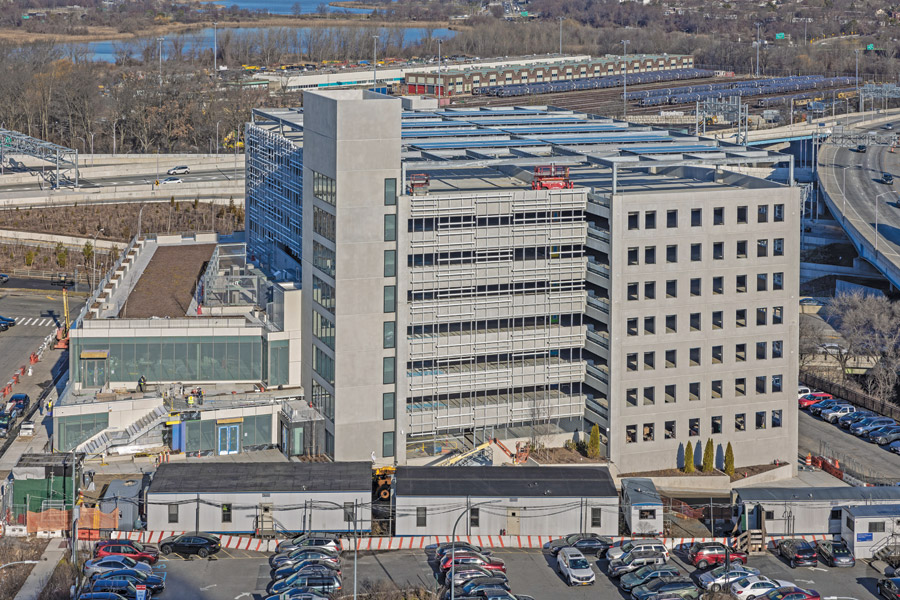
This community space and parking garage, the city’s first project in its $8.4-billion effort to replace the jails on Rikers Island, is also its first design-build project after receiving state permission in 2018 to use the construction delivery method.
Photo courtesy of New York City Dept. of Design and Construction
Keeping New York City connected and functional has become increasingly challenging on several fronts in recent years, leading to larger and more multidimensional projects. Among the agency’s priorities is safeguarding neighborhoods and infrastructure from the looming threat of frequent severe storm events, including preventing a repeat of Superstorm Sandy impacts.
Over the past two years, DDC has led construction of the resilience project’s 2.4-mile-long system of raised parkland, floodwalls, berms and sliding and swinging floodgates, while also upgrading five separate park and playground areas, including the 57-acre East River Park. The project is set for completion in 2026—along with the $392-million Brooklyn Bridge-Montgomery coastal resilience project, a 0.82-mile companion system of gates and deployable flip-barriers that broke ground last fall.
“There was no playbook on how to do this kind of flood protection infrastructure in the city.”
—Karen Franz, President & CEO, AKRF
Karen Franz, president and CEO of consultant AKRF, which led the resilience project’s environmental review and design, credits DDC for fostering needed multi-agency collaboration to develop standards for creating and maintaining such a complex, one-of-a-kind project. “There was no playbook on how to do this kind of flood protection infrastructure in the city,” she notes. “Collaboration was important because every square inch was scrutinized for the value it brings. DDC set up the process so that everyone could contribute. We felt we could bring any idea to the table.”
The agency considers fostering a collaborative, responsive environment important for projects, says Mike Capasso, owner of CAC Industries Inc. Along with being part of the resilience project team, the firm has executed a variety of DDC-led infrastructure projects, most recently completing a $79.5-million water line and street rebuild in Queens. Agency leadership “is always accessible and available to resolve unforeseen problems that arise and to help us expedite completion with the least amount of disruption to the community,” says Capasso. “It’s good to know that if something comes up, I can talk to a commissioner or assistant commissioner and get it resolved. A lot of agencies don’t do that.”
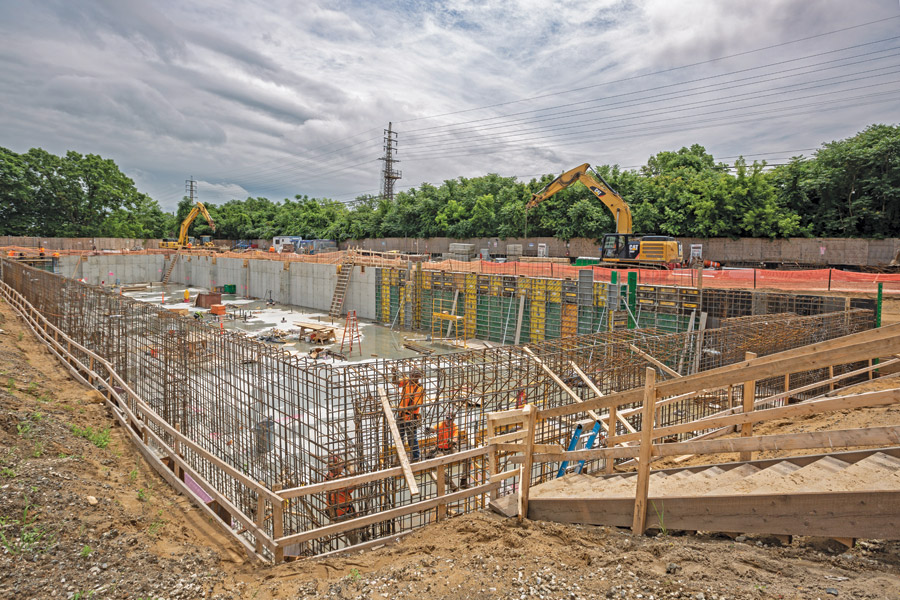
The city Police Dept.’s $104.8-million 116th Precinct project in Queens will have a first-floor community room with a dedicated entrance to allow residents and others to better engage with the department.
Photo courtesy of New York City Dept. of Design and Construction
NYC Dept. of Design & Construction Projects:
A Snapshot
The $2.5-billion Southeast Queens Initiative, a collaboration with the city’s Environmental Protection and Transportation departments, aims to implement infrastructure projects to improve flooding and street conditions through the area. The 44-project program is the largest of its kind in New York City. Eighteen projects have been completed, with three currently in construction.
During the past six years, DDC also has installed more than 5,600 green infrastructure assets as well as more than 770 linear ft of permeable pavement city-wide to manage the effects of intense thunderstorms. Last year’s efforts included completion of more than 1,800 rain gardens and infiltration basins that improve stormwater drainage on city streets and reduce loading on the sewer system. DDC is also involved in planning and execution of New York City’s Cloudburst Program, which constructs clustered stormwater management projects in flood-prone communities.
The $141-million Shirley Chisholm Recreation Center in Brooklyn and $92-million Mary Cali Dalton Recreation Center in Staten Island are two key projects in DDC’s design-build pilot program. Both are expected to break ground this year and be completed in approximately two years.
Delivering better facilities
The Borough-Based Jails program may prove equally transformational beyond its fundamental goal to replace the notorious Rikers Island jails by 2027 with modern detention facilities in Manhattan, Brooklyn, Queens and the Bronx.
Through enabling state legislation passed in 2018, DDC can use design-build for the program, which began with a 25,000-sq-ft multipurpose community space and 600-space parking garage adjacent to Queens Borough Hall and Criminal Courthouse. It was completed in January by Hunter Roberts Construction Group and design firms Marvel and Urbahn Architects. Demolition and site preparation at the four new jail sites is underway, with design-build contracts for new construction set for award by end of the year.
State laws that limit DDC’s use of design-build to emergency work is a point of frustration for Foley, who blames antiquated city-specific procurement rules for inefficiencies that added delay and higher cost to many projects. But the $82.7-million Queens community space and garage project went from contract award to completion in just 22 months—less than half the time of DDC’s comparable design-bid-build projects—and achieved more than $7 million in savings. According to the agency, design-build’s collaborative approach also eliminated the need to tap the project’s budgeted $9.5-million contingency fund. “The project has really transformed the dialogue of what’s possible with capital projects in New York City,” Foley says.
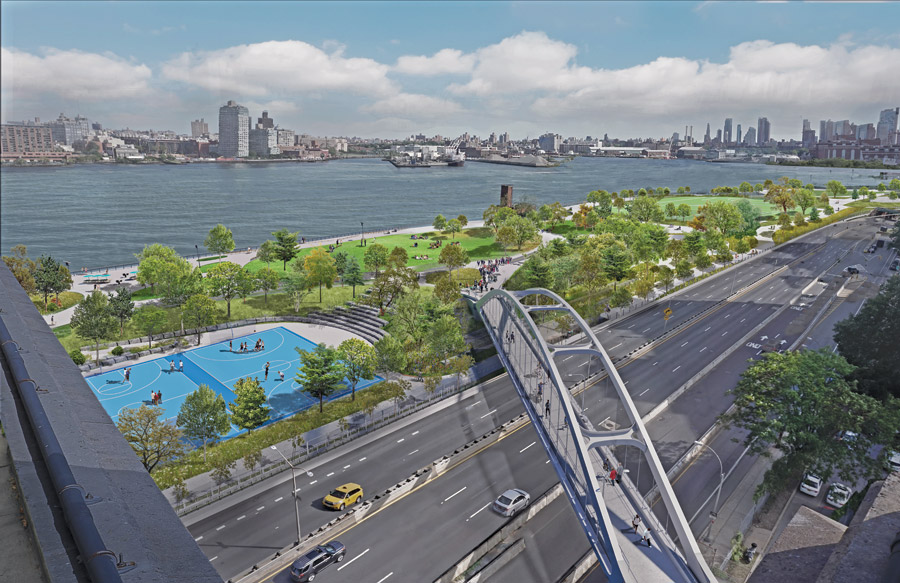
The future East River Park is part of the flood control system. The park has an ADA-compliant footbridge across FDR Drive that connects to public housing.
Rendering courtesy of Bjarke Ingels Group
More opportunities to demonstrate advantages lie ahead following legislative approval in 2019 of a pilot program further expanding DDC’s use of design-build. Seven public buildings and three infrastructure projects are in the pipeline, along with the jails program. “We’re being very strategic in identifying projects that would be successful as design-build and where we can exceed expectations for contract completion,” Foley says.
Design-build will ultimately make up only about 5% of DDC’s program, but Foley would like multiple types of alternative project delivery to be routinely used. He says the agency took advantage of a pandemic emergency authorization to use construction manager at-risk to build a 470-bed field hospital in Queens in 11 days and three large COVID-19 Centers of Excellence for the city’s public hospital system in less than seven months.
Foley also hopes state legislators will act on recommendations offered by the capital process reform task force launched by Mayor Eric Adams. One would shift DDC from a city agency into a state authority, allowing it to fully revamp its procurement rules. “Quite simply, we need those tools to be successful,” Foley says. “Other state agencies get to use them; we should too.”
Sam Padilla, owner of Padilla Construction, says the city’s construction community stands to benefit as well. “With alternative delivery, you can identify and plan for escalation and other unknowns, rather than putting in a bid and waiting six months for the award when things may be totally different,” says Padilla, whose firm has performed DDC work for more than 25 years. “You also put more projects into the pipeline, which enables more firms to keep more people employed.”
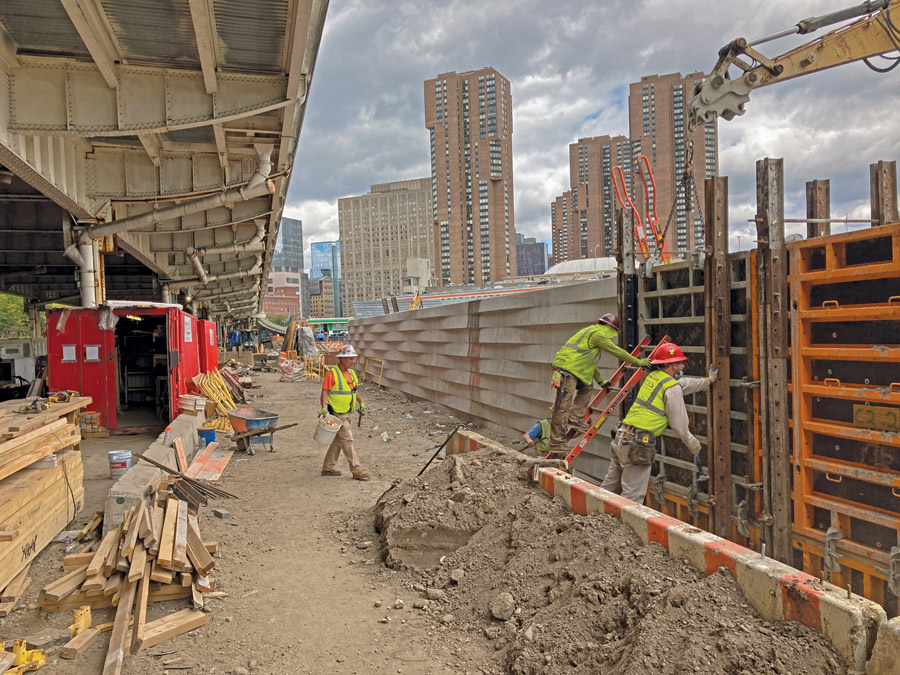
Workers remove concrete forms that create a decorative wave pattern on the floodwall being built for the East Side coastal resilience project.
Photo courtesy of New York City Dept. of Design and Construction
Framing a future
Meanwhile, DDC is taking other steps to improve its capital construction processes. Based on its 2019 Strategic Blueprint for Construction Excellence, it has initiated pilot projects with contracts that incorporate price adjustments for fuel, asphalt and steel as well as early completion incentives. The agency is also testing a new contract line item that provides funds for unforeseen conditions, rather than requiring contractors to go through the months-long process of securing a change order.
“Quite simply, we need those tools to be successful. Other state agencies get to use them; we should too.”
— Tom Foley, DDC Commissioner
Another DDC priority is having more minority and woman-owned businesses with M/WBE designation on projects. In its fiscal 2023 first quarter, DDC saw a 31% use rate for the firms. Its design-build portfolio includes a 30% use mandate for both design and construction contracts. DDC has also created an M/WBE prequalified list for small construction procurements from $500,000 to $3 million and recently welcomed 49 firms into a new mentoring program that will provide tailored business management and growth planning support and exclusive opportunities to bid on designated projects. Foley is particularly proud that his agency’s $515 million in awards makes up more than one-third of total city M/WBE contracting. “It’s an exciting program that will only get better,” he says.
Still, DDC is not immune from the same acute need for technical and managerial talent faced by owners as well as by designers and contractors—heightened by the agency’s increasingly complex project demands. For that reason, Foley and other agency leaders are making the rounds of colleges, career fairs and other opportunities to boost recruiting.
selling point that Foley believes will distinguish DDC is its ability to offer opportunities to apply prospects’ skills to make a difference in so many communities. “You can be proud of the work you do and who you’re doing it for,” he says.




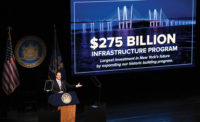
Post a comment to this article
Report Abusive Comment